Hyundai has been making some big moves when it comes to their SUV lineup over the past few years, and this year we see one of the biggest moves yet: the all-new Hyundai Santa Fe! It’s grown to accommodate a newly standard 3rd row, gained boxy styling and tons of luxury features, even a few that aren’t offered on the award-winning Palisade, today’s competitor. So, within the Hyundai lineup, who wins in this 2024 Hyundai Santa Fe vs. 2024 Hyundai Palisade battle? Well, let’s go ahead and find out!
Pricing and Equipment
Like always, let’s dive into the pricing of these two SUVs to start.
To make things as comparable as possible, we’ve chosen the highest trim of both SUVs which is called Calligraphy. That means they are packed with all the features, and after checking all the boxes, the Palisade comes in at $53,955.
MSRP (Calligraphy AWD): $52,350 | Options: $210 | Destination: $1,395 | Total: $53,955
Now you might be surprised at how close these two are when it comes to pricing as the fully loaded Santa Fe Calligraphy has risen in price this year to $48,300. Adding in destination and a handful of options and the final price comes in a touch under $51 grand.
MSRP (Calligraphy AWD): $48,300 | Options: $1,210 | Destination: $1,395 | Total: $50,905
By the way, if you want to get the best price from local dealerships and access to invoice pricing info for these two models or any vehicle, we have a tool on our website to do just that. Click here for more information!
Exterior Design
So, starting out the exterior, some brands make all their vehicles look the same, but that certainly cannot be said about these two siblings. The all-new Santa Fe takes bold to a new level with a completely squared off design reminiscent of a Land Rover. For those looking for a classier approach, the Palisade also has an upright face, but it goes with a fully chrome grille.
Now we won’t be awarding points based on personal preference on design, but moving over to the lighting, we also have very different designs. The Santa Fe has a full-length light bar, and both SUVs have LED projector beams and LED turn signals. Neither have fog lights on these latest examples.
Moving on to the sides, the boxy Santa Fe has grown about 2 inches this year which makes it within spitting distance of the Palisade. We’ll see how that translates to interior space later in this comparison, especially regarding the third rows and cargo capacity. But as far as wheels, it’s the Santa Fe that has larger ones, coming in at 21 inches compared to the Palisade’s 20s.
Santa Fe also includes a cool hand grab to make getting to the roof rails substantially easier, and let’s talk about colors since you are bound to have noticed by this point. The Santa Fe offers bolder color options, but only the Santa Fe can get matte paint for those of you wanting that additional style from the factory.
Length: 190.2-in (Santa Fe) | 196.7-in (Palisade)
Around back, these two once again couldn’t possibly look any more different, but as far as features are concerned, they are similar. Both have single exposed exhausts outlets on the right side, rear wipers, LED brake lights and turn signals. For towing, the Palisade can handle 1,500 pounds more than this Calligraphy Santa Fe at 5,000 vs. 3,500.
Towing: 3,500 lbs. (Santa Fe) | 5,000 lbs. (Palisade)
Additional Features
Now it’s time for some individual features and the first place we’re stopping is the mirrors. Here, we find a very interesting difference. Both models have heating and blind spot monitoring, but only the Palisade has auto-dimming, and only the Santa Fe has power folding.
These are family SUVs after all, so both Hyundai’s give you their entire suites of active safety systems as standard equipment and highway drive assist. They both also have the smart parking system, which can pull into and out of tight parking spots unmanned. Only the Santa Fe, though, has Hyundai’s newest driver health monitoring system which can even stop the vehicle in the event you are unresponsive while driving.
Both these SUVs have the same class-leading 10-year warranty and 3 years of complimentary maintenance.
Well, that wraps up the outsides, but these are Calligraphy’s after all, so let’s see the most important part: the luxurious interiors!
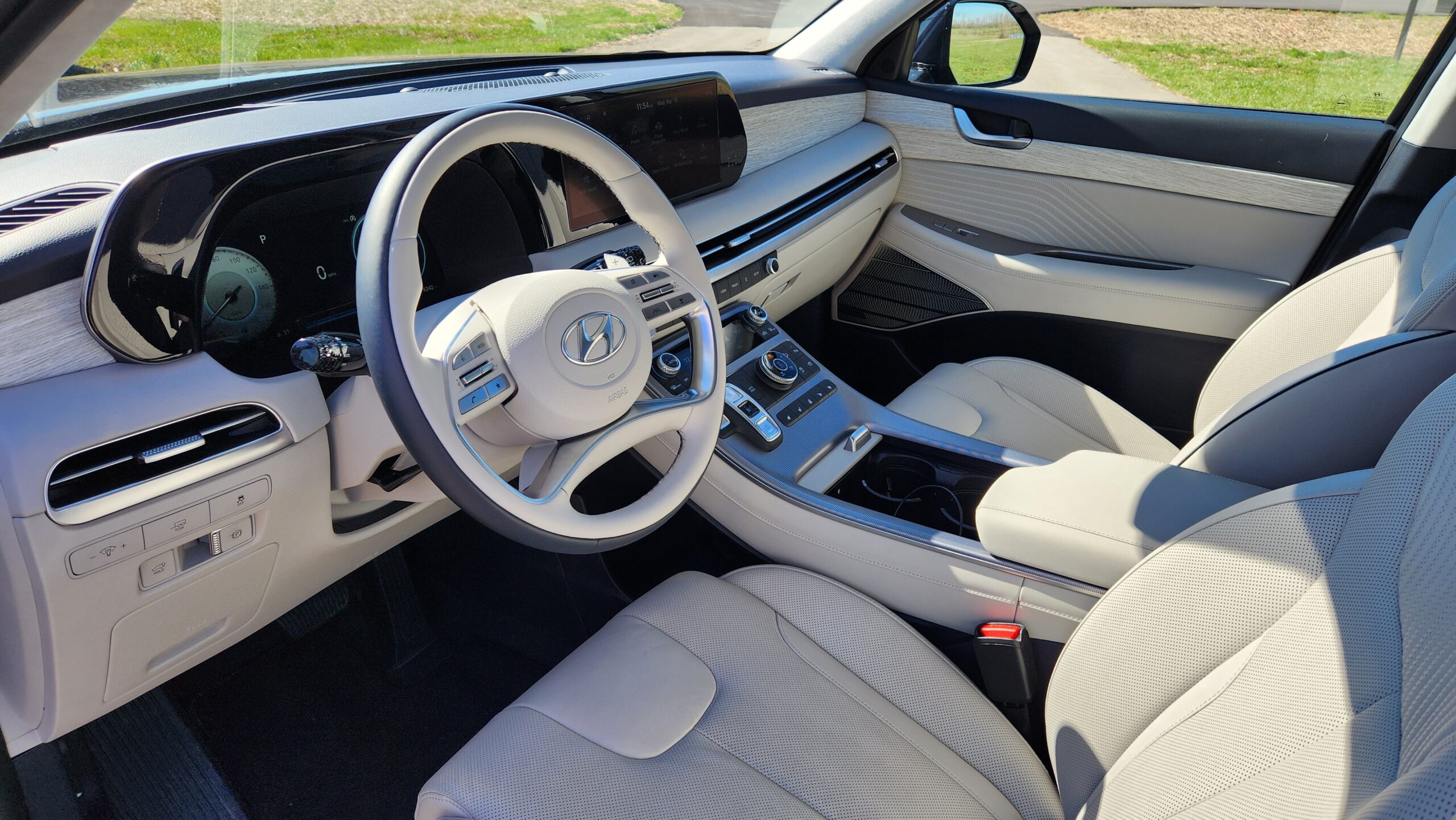
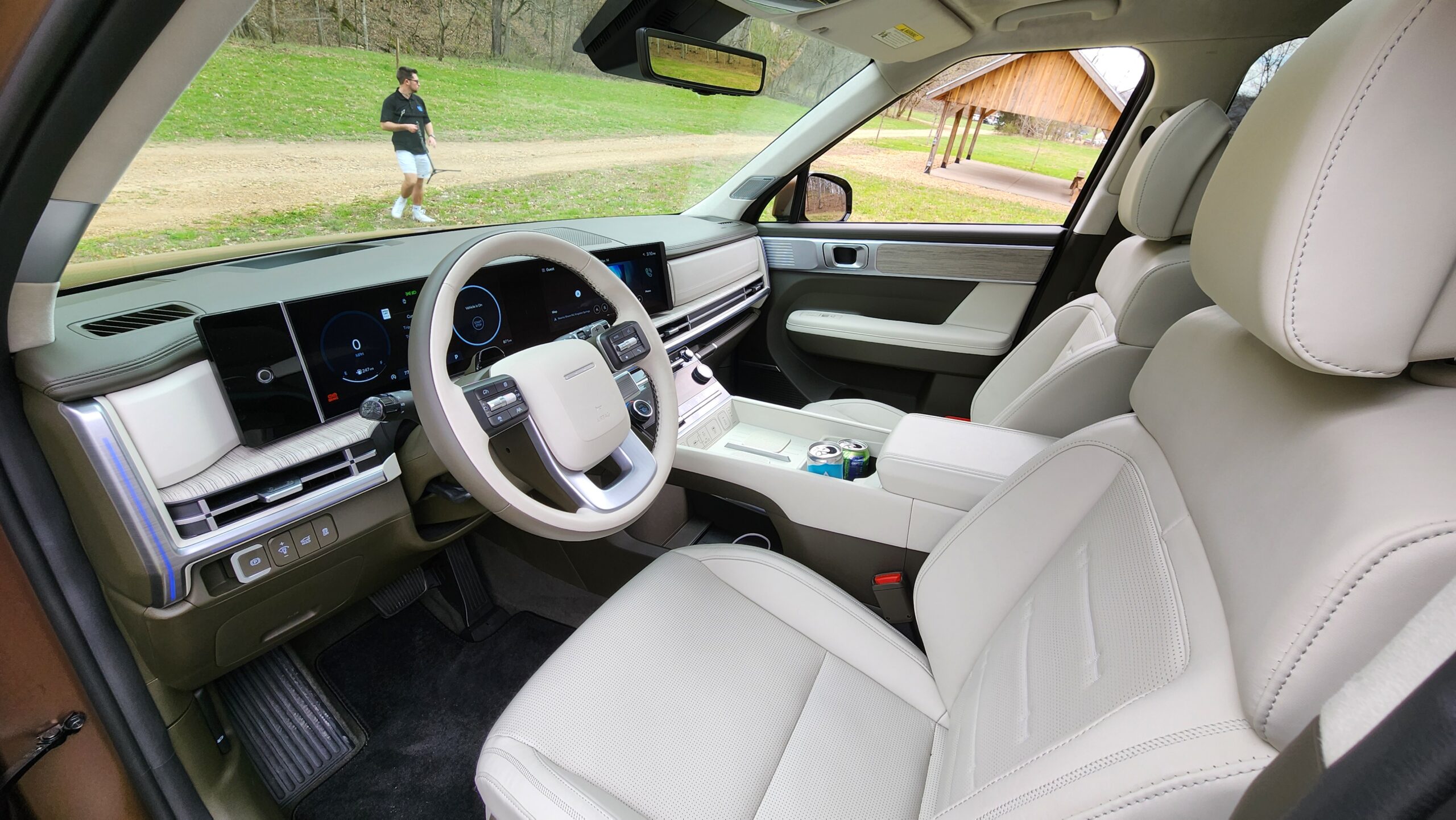
Interior Design
So, walking up to the vehicles, even the key fobs have different designed fobs to control their smart entry systems, built in remote start, and they also have Hyundai’s latest Digital Key 2.0 system if you’d prefer to use your phone.
And, wow, once you open the doors, you’ll begin to see why these top trim levels demand an over $50,000 price tag. While the designs once again are very different, both are finished with top notch materials, loads of technology, and if the badges were covered up, they don’t seem like mainstream SUVs.
But one of the nicest pieces inside the cabin are the seats. These top-end Calligraphy versions replace regular leather with Nappa leather in both Palisade and Santa Fe. That’s an extremely supple and premium leather and moving past that, both seats are also heated, ventilated, and have memory functions.
As far as adjustability, they are 12-way power, and each boasts unique features. Only the Palisade includes the boujee feature of massaging, but the new Santa Fe fights back with the full relaxation seat and recliner.
One of the reasons we selected the top Calligraphy trims was to show off just how nice these cabins can get, so let’s talk material quality. The door trims and dashboard are covered in leatherette and soft touch plastics, you have realistic faux wood trim, and even have fancy suede headliners. Overall, both cabins are equally impressive materials-wise so no points will be awarded.
After startup, you’ll see two fully digital 12.3-inch gauge clusters with slightly different graphics, one free-standing and the other enclosed. They also have Hyundai’s cool blind spot camera system and large head-up displays for these top examples. You may also notice the Santa Fe has a fingerprint reader to allow for syncing of driver profiles and even starting when using the digital key system.
Pushing back, cold hands are a thing of the past with heated, two-tone leather wrapped steering wheels and rain sensing wipers.
Storage and Technology
Now one of the most important aspects of a family SUV is the storage and you’ll be impressed. Both models emphasize this area, and for our Car Confections donut test, they fit over a dozen donuts. Surprisingly, the smaller Santa Fe fits over 2 dozen donuts which is more than Palisade, and it also offers two passenger storage areas. That’s in addition to both model’s large center pass throughs. Overall, Santa Fe wins here, and it’s also worth noting that Santa Fe also boasts dual wireless phone charging pads compared to the single pad in the Palisade.
Finally, it’s only the Santa Fe that has UV sterilization to get rid of germs on your objects in that top storage cubby.
All the interior space is made possible because of their electronic shifters. While they are in different spots, once you go into reverse, you’ll find 360-degree cameras and 3D spin ability for these top models.
Moving on to more differences, the Palisade has a 3-zone setup compared to the dual-setup in the Santa Fe, and now that takes us to the nearby volume knobs. This area is also different, with the Santa Fe getting a 12-speaker Bose audio system, and the Palisade a 12-speaker Harmon Kardon system. Let’s sample both. Overall, while they have the same number of speakers, the Palisade’s system has the richer and more balanced sound quality.
And now that brings us to the infotainment systems and displays… which, unsurprisingly at this point, are also quite different. While they are both 12.3 inches in size, the Santa Fe is one of the first Hyundai’s to use their new CCnc software. That means it has overall better performance and graphics, and finally we have wireless Android Auto and Apple CarPlay abilities. The Palisade still requires a physical cord connection, and both have integrated navigation.
Wrapping up the inside, we have auto dimmed rearview mirrors with HomeLink garage door openers and smart camera abilities. The sunroofs are the same dual panel moonroof setup.
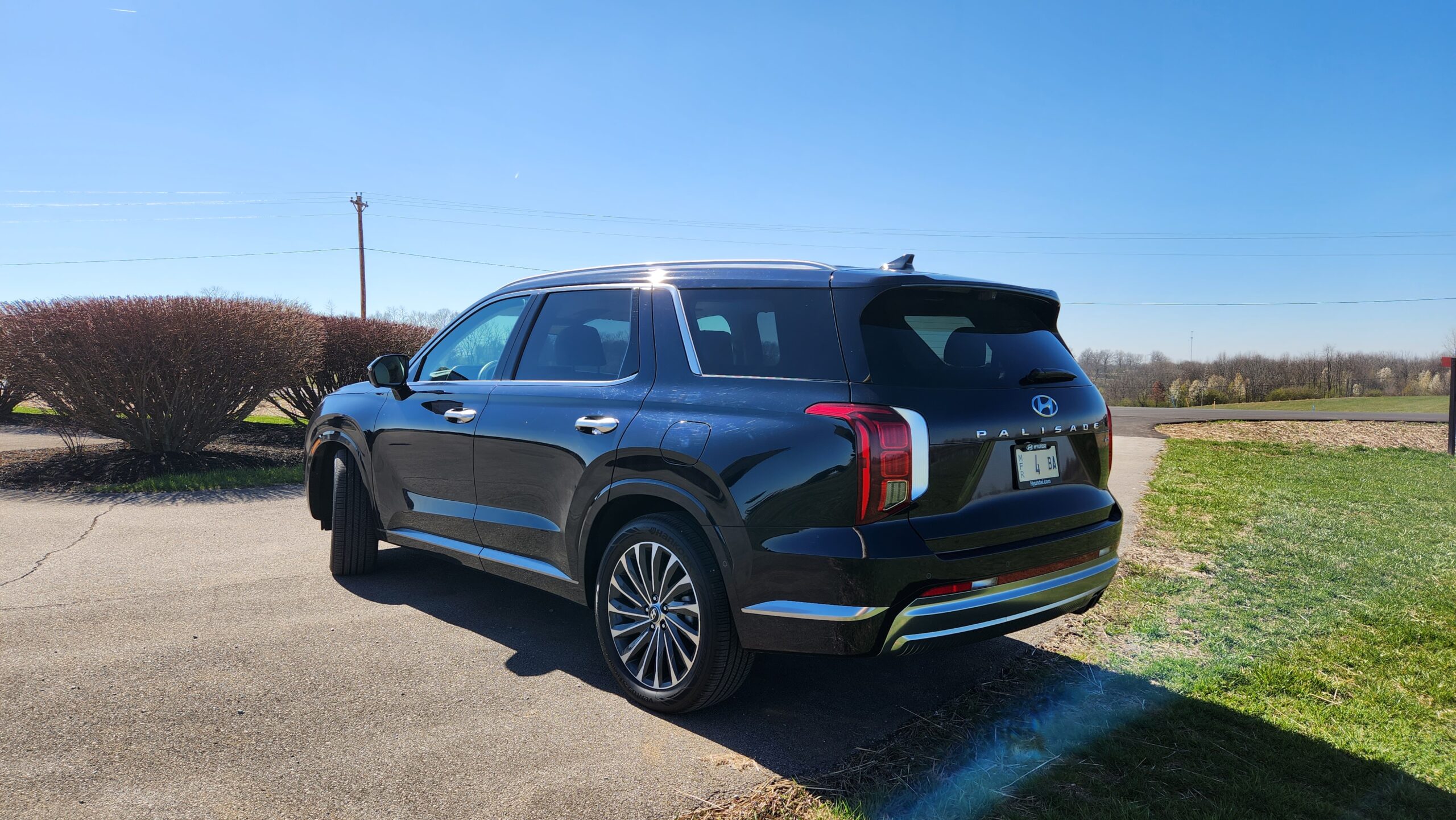

Rear Seats and Cargo
Alright, now it’s time to dig into one of the most interesting parts of this comparison. Remember the Palisade is about 6 inches longer than the Santa Fe, so let’s see how that translates to space. Starting with the 2nd row measurements, both are nearly identical and well within the 5% margin that is required to score a point.
Santa Fe: Legroom: 42.3-inches | Headroom: 40.6-inches
Palisade: Legroom: 42.4-inches | Headroom: 40.2-inches
But it’s not ALL about space. Your family is going to want some features in the rear and indeed the two deliver and have advantages over one another. Starting with the similarities, both have window sunshades, 2 charging USB ports, and heated rear seats.
Now on to the differences. The Palisade Calligraphy is one of the only mainstream vehicles to have ventilated second row seats, and it also includes a household outlet unlike the Santa Fe.
Santa Fe fights back, though, as only it includes a fully power second row. That’s a feature rarely seen outside of 6-figure luxury vehicles and something the Palisade does not have.
One of the biggest news headlines about the Santa Fe this year is that it now has added a third row on all trims. But is it as good as the Palisade’s? Well, first off, getting back there is easy in both with one-press folding and sliding mechanisms. For space, they have nearly identical headroom, and the Palisade has just under 5% more legroom, so it won’t get a point. Despite what you might would expect, these two have similar third row experiences, even down to the decent thy support. The biggest thing to consider is that the Palisade has seating for 3 instead of two in the Santa Fe, which obviously increases the total occupancy from 6 to 7 passengers.
Santa Fe: Legroom: 29.9-in | Headroom: 37.7-in
Palisade: Legroom: 31.4-inches | Headroom: 37.8-inches
Additionally, only the Palisade gets a class-exclusive heated third row, but both have vents and USB ports.
Now it’s time to head into the cargo areas and see how much stuff you can bring along with all the people. Even though the Santa Fe has grown larger in space, it’s still not enough to overcome the Palisade which has 20% more space behind the 3rd row, 12% more behind the 2nd row, and 8% more maximum capacity with all rear seats folded.
Santa Fe: 14.6 cubic feet behind 3rd row | 40.5 cubic feet behind 2nd row | 79.6 cubic feet max
Palisade: 18.0 cubic feet behind 3rd row | 45.8 cubic feet behind 2nd row | 86.4 cubic feet max
Additionally, it’s only the Palisade with a power folding third row, something not offered on the Santa Fe.
Alrighty, so that it for the interiors, but now let’s take this fight to the streets!
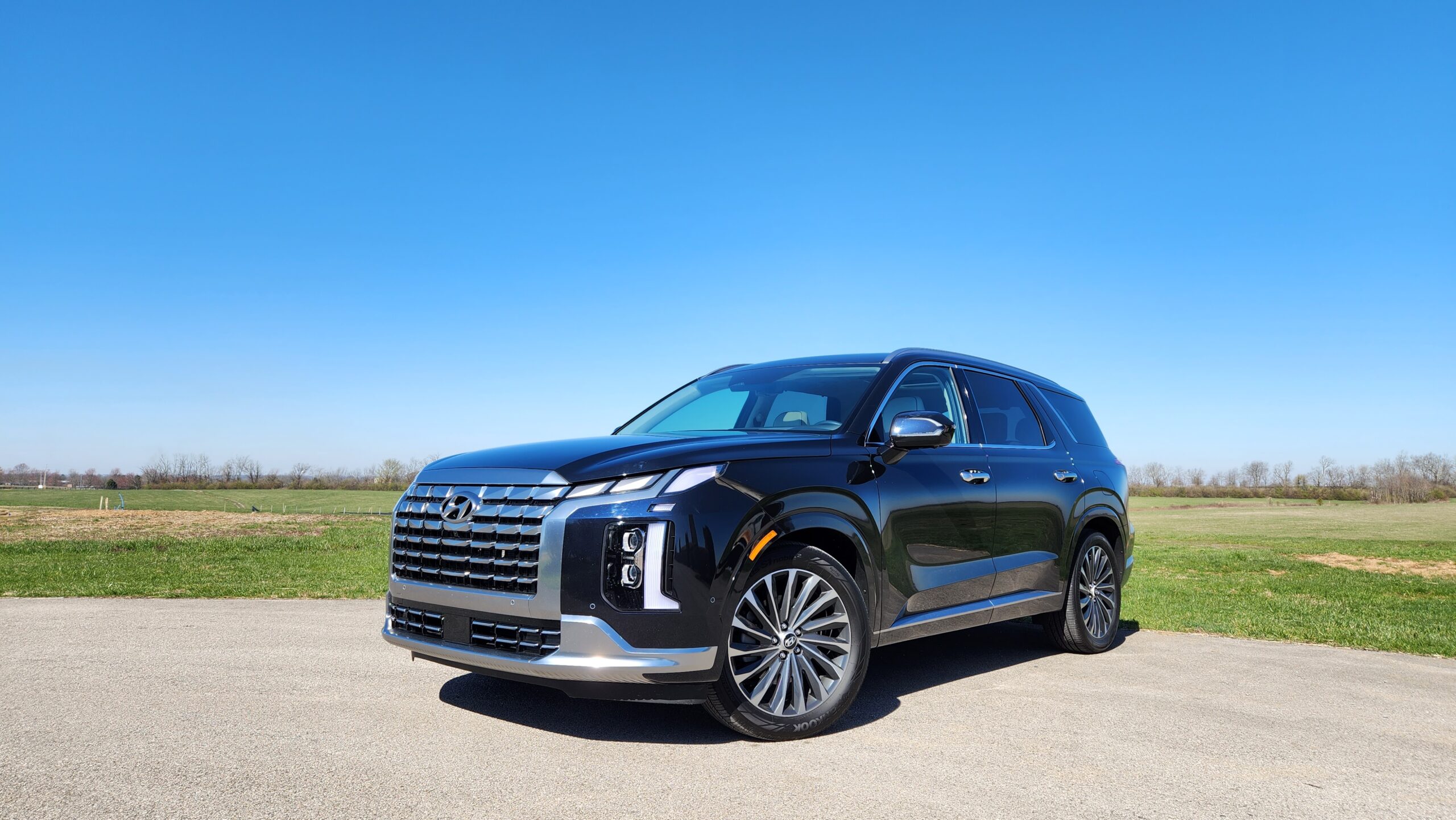
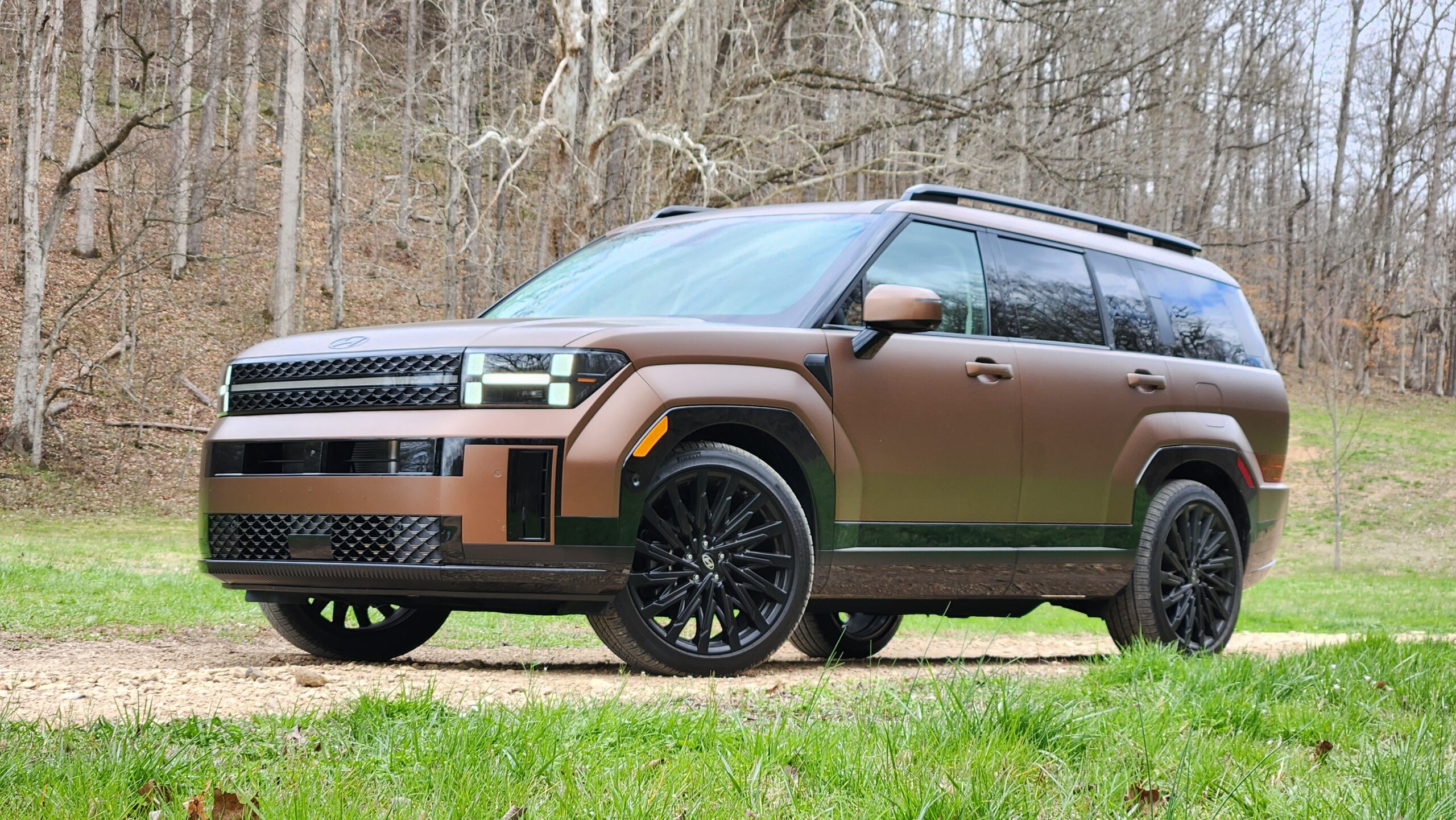
Powertrains
As we head into the powertrains, you shouldn’t be surprised these two once again are quite different. The Santa Fe gains a newly standard 2.5L Turbo 4-cylinder with 277 horsepower for 2024. Meanwhile, the Palisade continues with its traditional 3.8L V-6 with 291 horsepower. That means the Palisade has the horsepower advantage and the Santa Fe more torque.
Santa Fe: 2.5L Turbo I-4: 277 hp | 311 lb.ft of torque
Palisade: 3.8L V-6: 291 hp | 262 lb.ft
Test Drive and Fuel Economy
As you can tell by those accelerations, both get up to 60 mph reasonably quick. However, based on our personal experience and YouTube commenters, we do want to give a nod to the Palisade’s V6 for overall engine refinement over the Santa Fe’s turbo-4.
For transmissions, they have 8-speed automatic and 8-speed dual clutch transmissions in the Palisade and Santa Fe respectively. While the dual clutch does pose a slight shift-speed advantage, the smoother refinement of the Palisade’s transmission is better for a family SUV.
A HUGE focus in any 3-row is ride quality. Both of these Hyundai’s will impress with exceptional ride quality especially over long road trips. We say that from experience since we actually did take both of them on long road trips.
But another element of a nice road trip vehicles is to have serene environments free of loud noises, so let’s talk about that. Here at Car Confections, we always test the dB sound level readings of all the vehicles we test, and these two both scored luxury-like ratings, however, we cannot officially score them as the Santa Fe’s test had to be conducted out-of-state in Tennessee on a media drive.
Palisade: 55.6 dB
Santa Fe: 53.8 dB
And finally, for fuel economy, the Santa Fe’s smaller 4-cylinder engine and DCT do pay off here. Despite the similar size, it achieves 2 MPG better combined.
I do also want to point out that ONLY the Santa Fe has a hybrid variant available at this time which can get up to an impressive 36 MPG combined. HALF
Palisade AWD: 19/24/21 MPG
Santa Fe AWD: 20/28/23 MPG
Resale and Reliability
In our reviews and comparisons, we are also adding in reliability and resale value information. Obviously, these two are from the same brand so there won’t be any appreciable differences between them. Hyundai is rated slightly below average in reliability compared to all other vehicle makes, and we also estimate that these models will retain 55.3% of their original MSRP after 5 years and 19.6% after 10 years.
If you’d like to check out all our data about reliability and resale values, as well as learn about our methodology, make sure to head to www.carconfections.com/resale and www.carconfections.com/reliability. Buying a car is a big decision, and this is a great place to compare all the makes you might be cross-shopping.
2024 Hyundai Santa Fe vs. 2024 Hyundai Palisade winner!
Well, that’s it for another SUV smackdown comparison! These two are siblings but it honestly felt like they were from completely different brands! And until a new Palisade comes out, there is certainly a lot of overlap between them as well. But let’s recap and talk about who should be your winner.
Palisade:
- Classy design – not as controversial
- Third row features (power-fold and heating)
- Cargo capacity
Santa Fe:
- Bolder design – matte paint
- Interior storage – and some unique features like UV tray, dual wireless chargers
- Technology – wireless CarPlay
- Third row that is surprisingly similar to Palisade on space
Now we want to know your opinions, so make sure to head to the comment section and let us know which one you would pick!
Thanks for joining us for another Car Confections Comparison! We’ll catch you next time as we sample the latest automotive delicacies!
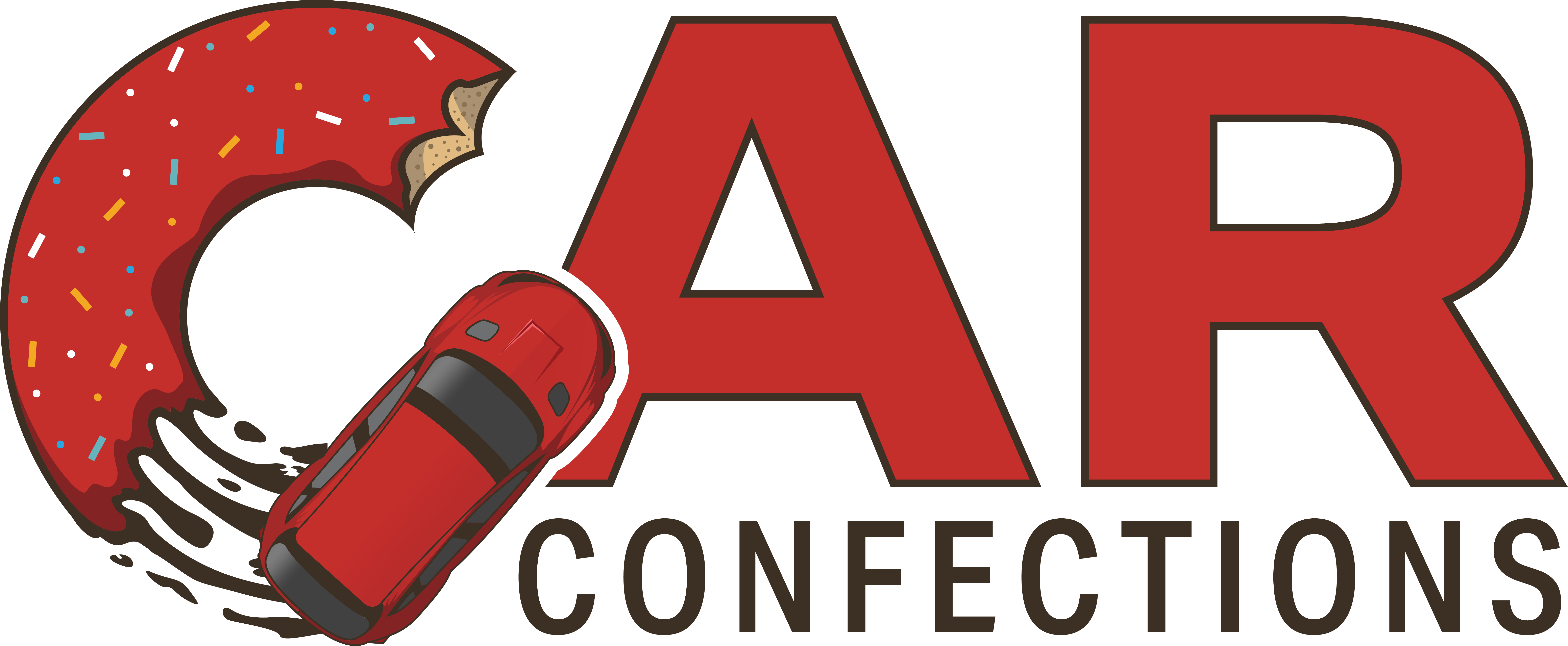

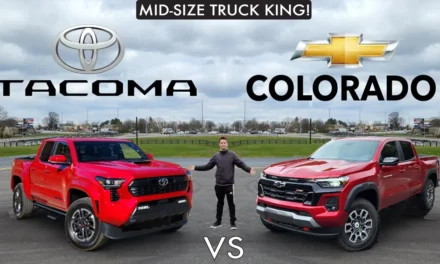
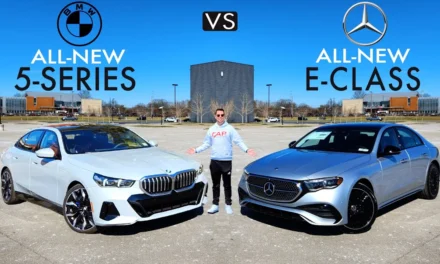
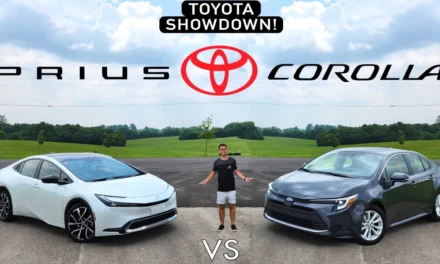





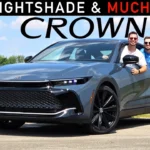

Recent Comments